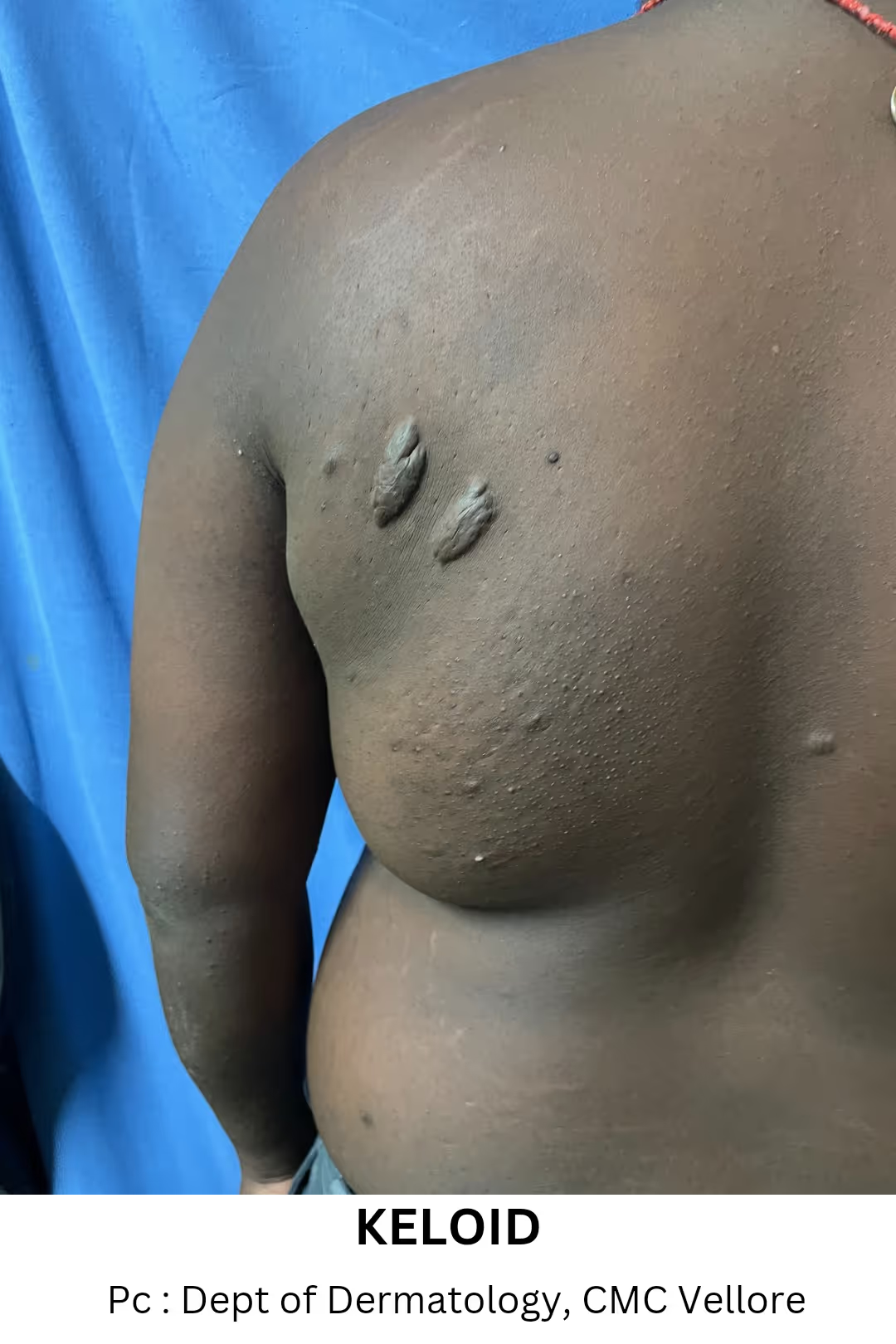Keloids are thick scars extending beyond the original wound. Only people who are genetically prone will develop keloid over a scar.
They grow slowly and can take 3-12 months after injury to develop. It appears pink, red or dusky red in color and can be flat or ball like depending on site. It feels firm, hard or rubbery in consistency and may be multiple. It can be painful and itchy.
Keloids do not turn cancerous.
They commonly develop on chest, shoulder, ear lobes & back.
You are more likely to develop keloid if you have one or more of the following factors:
Belonging to ethnic Chinese, African Americans or Black race.
Post-surgery wound care is important, like avoiding prolonged sutures and secondary infection.

Treatment can reduce the size of Keloid, symptoms like pain and itching in the keloid etc., however many a time it tends to recur in months to years even after successful treatment. Following your Dermatologist instructions can help you reduce the chance of recurrence of Keloids.
There may be more than one type of treatment, they can be difficult to get rid of and will need multiple treatments. A treatment plan for keloids may include:
A series of steroid injection into the keloid at intervals of 3-4 weeks, which will shrink the keloid size. If it fails to respond proportionately, Dermatologists may add another therapy to the treatment like anti-cancer medicines.
Silicone gel sheets and gels can be used post procedures to prevent recurrences.
Surgical removal of bulky keloids followed up with steroid injections or cryo alone or with intralesional steroids, radiation or pressure dressings is done to prevent recurrence. Surgical removal is commonly attempted for auricular keloid.
Laser treatments along with steroid injections can be done, which can reduce the thickness and color of keloid.
Surgery is an avoidable option, but can be done on certain sites and conditions like:
Post-surgery wound care is important, like avoiding prolonged sutures and secondary infection.
Post-surgery instructions like follow up with pressure dressings or injecting steroids should be emphasized to patient.
Avoid cosmetic procedures if not essential.
If you develop keloid after ear piercing, use pressure dressings immediately and avoid second piercing.
Do a test spot before doing tattoo or body piercing.
Inform the surgeon of your keloidal tendency, he may use a different technique to reduce chances of keloid or advise you against it.
Proper wound care after injury reduces the chance of keloid.
• Patients with post burns scars need to use pressure garments, as they are more prone to keloids.
Disclaimer: This article is only for general patient information and is not intended for self medication. There is no legal liability of IADVL arising out of any adverse consequence to the patient. Subsequent to its use for self treatment of the disease images adjust for the depiction of the condition and is not to be used for any other purpose.
Explore articles in this section to discover essential tips and advice for maintaining healthy skin and hair on a daily basis. Each article provides practical information on skincare routines, hair care techniques, and product recommendations to help you look and feel your best every day.

Confused about what you should include in your skincare? After surfing through so much information on the internet and social media, it becomes rather difficult to decide and maintain a skincare routine.

Everybody dreams of a beautiful head of hair!
Here are a few basic hair care tips: Regular wash is essential to keep your scalp and hair clean and healthy.

Nowadays nails, like hair, have become objects of attention and decoration. Our nails reflect our general health. A person who has healthy nails will notice the following features